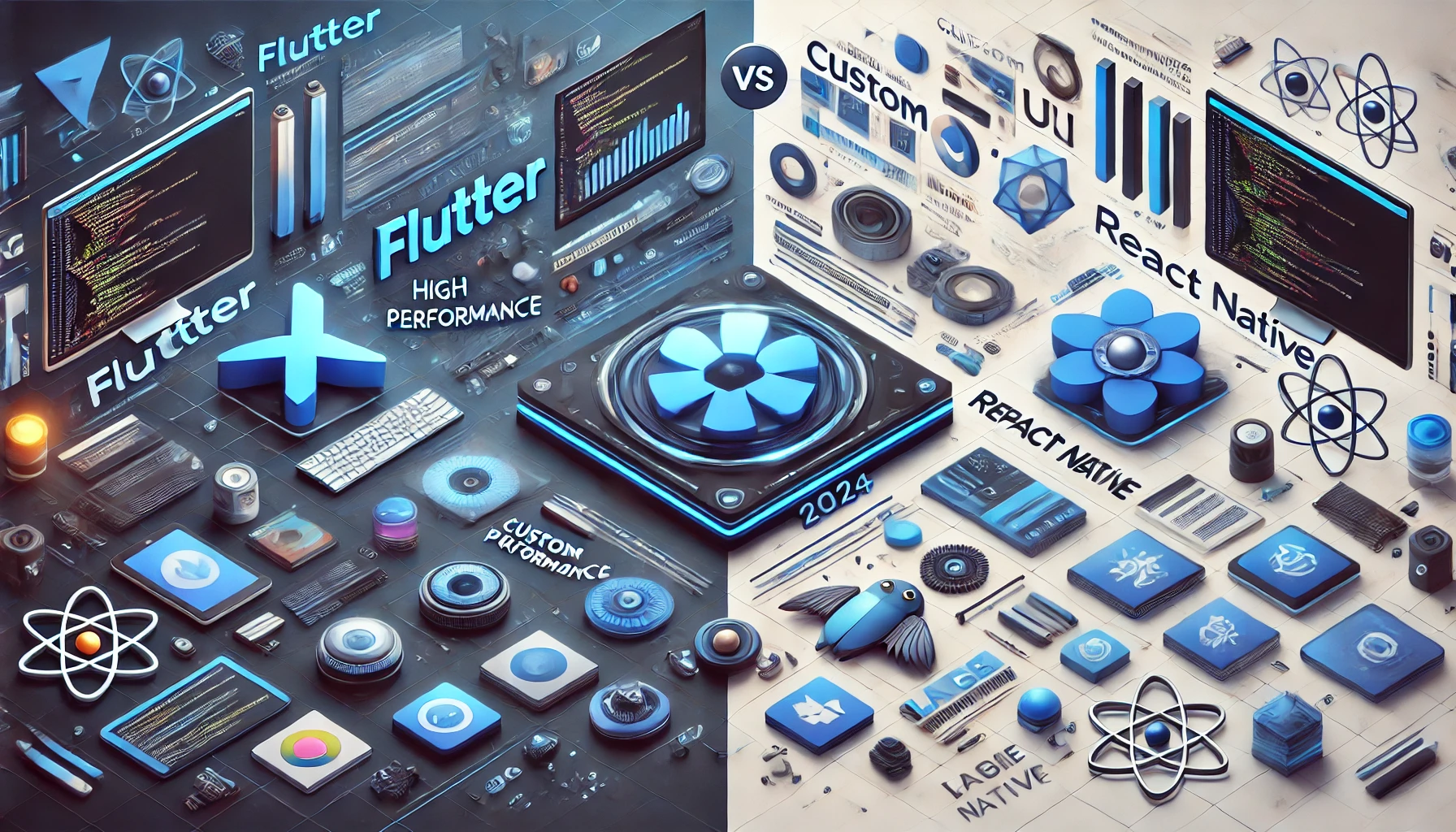
In mobile app development, choosing the right framework is crucial for ensuring your app’s success. Two of the most popular frameworks in the industry today are Flutter and React Native. Both offer powerful tools for building cross-platform mobile applications, but which one should you choose in 2024? In this blog, we’ll compare Flutter and React Native based on various factors to help you make an informed decision.
1. Overview of Flutter and React Native
Flutter
Flutter, developed by Google, is an open-source UI software development kit (SDK) that allows developers to create natively compiled applications for mobile, web, and desktop from a single codebase. Launched in 2018, Flutter has quickly gained popularity due to its high-performance engine and rich set of pre-designed widgets.
React Native
React Native, developed by Facebook, is also an open-source framework for building cross-platform apps using JavaScript and React. Since its release in 2015, React Native has become a favorite among developers due to its ability to leverage native components and its extensive community support.
2. Performance Comparison
Flutter
Flutter apps are known for their excellent performance. The framework uses Dart language and its own rendering engine, which compiles directly to native ARM code. This allows Flutter apps to achieve near-native performance, with smooth animations and fast load times.
React Native
React Native uses JavaScript and a bridge to communicate with native components, which can introduce some performance overhead. While React Native apps are generally performant, they may not achieve the same level of performance as Flutter, especially in apps with complex animations or heavy computational tasks.
3. Development Experience
Flutter
Flutter offers a cohesive and streamlined development experience. Its “hot reload” feature allows developers to see changes in real-time, speeding up the development process. The extensive set of widgets makes it easy to create custom UIs, and Flutter’s documentation is comprehensive and beginner-friendly.
React Native
React Native also supports hot reloading, which enhances productivity. It has a vast ecosystem of libraries and plugins, thanks to its mature community. However, developers may need to write additional native code for more complex functionalities, which can increase development time and complexity.
4. Community and Ecosystem
Flutter
Flutter’s community is rapidly growing, but it’s still relatively young compared to React Native. However, Google’s backing and continuous updates have contributed to a robust ecosystem with a wealth of plugins and tools. The Flutter community is active in creating tutorials, and plugins, and contributing to the framework’s evolution.
React Native
React Native has been around longer and boasts a large, mature community. This means more third-party libraries, tutorials, and support available to developers. The extensive ecosystem makes it easier to find solutions and integrate with existing tools and services.
5. UI/UX Capabilities
Flutter
Flutter’s widget-based architecture provides developers with a high degree of control over the app’s appearance and behavior. The framework allows for highly customized UIs that look and feel consistent across different platforms. Flutter’s ability to create pixel-perfect UIs is one of its standout features.
React Native
React Native relies on native components, which means the app’s UI will look native on each platform. While this provides a more “native” feel, it can also lead to inconsistencies across different devices and operating systems. Customizing the UI to match the exact design can be more challenging in React Native compared to Flutter.
6. Learning Curve
Flutter
Flutter uses Dart, a language that may be unfamiliar to many developers. While Dart is easy to pick up, it does add an extra step for those already proficient in JavaScript. However, Flutter’s intuitive framework and detailed documentation make the learning process smoother.
React Native
React Native leverages JavaScript, one of the most widely used programming languages. Developers with experience in JavaScript or React will find it easier to get started with React Native. The learning curve is generally lower, especially for those who already have web development experience.
7. Future Prospects
Flutter
Flutter’s popularity is on the rise, and Google’s continued investment in the framework suggests a strong future. With Flutter 3.0 and its growing support for web and desktop applications, Flutter is becoming a more versatile and attractive option for developers.
React Native
React Native continues to evolve with significant updates and contributions from the community. Facebook’s commitment to the framework ensures it remains a strong contender in the mobile development space. The introduction of the new architecture, including the Fabric renderer and TurboModules, is expected to improve performance and developer experience.
Conclusion: Which One to Choose in 2024?
The choice between Flutter and React Native in 2024 depends on your project’s specific needs and your team’s expertise.
- Choose Flutter if you need high-performance, visually consistent apps with a rich UI, and you are open to learning Dart. Flutter is ideal for projects where customization and pixel-perfect design are crucial.
- Choose React Native if your team is already proficient in JavaScript, and you prioritize faster development with a large ecosystem and community support. React Native is suitable for apps where native look and feel are more important, and time-to-market is a priority.
Both frameworks have their strengths and will continue to be relevant in the coming years. Consider your project requirements, team skillset, and long-term goals to make the best decision for your app development in 2024.
Looking for expert advice on performance optimization in React Native? Our dedicated React Native development team is eager to assist.
Tags: #Flutter vs React Native #Mobile App Development 2024 #Cross-Platform Development #App Development Frameworks #React Native vs Flutter


